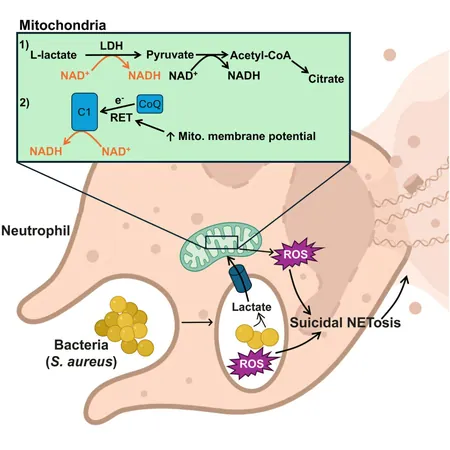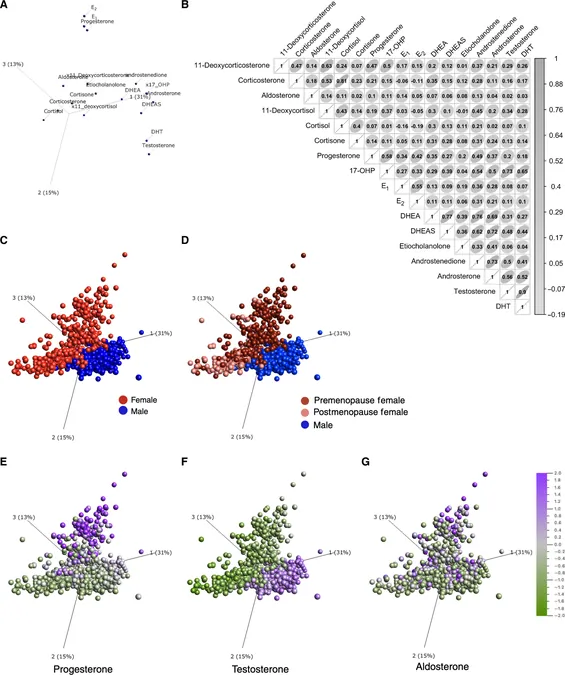
Breakthrough Discovery: How Lupus Patients' Neutrophils Fail to Detect Bacterial Threats!
2025-03-25
Author: Wei Ling
A groundbreaking study from the University of Tennessee (UT) sheds light on the immune dysfunction seen in lupus patients, revealing a crucial malfunction in their neutrophils—the body’s first line of defense against infections. Assistant Professor Andrew Monteith and his team in the Department of Microbiology have made significant strides in understanding how neutrophils, the most prevalent type of immune cell, are unable to detect infections, especially in individuals suffering from systemic lupus erythematosus (SLE).
Research Insights
Led by Research Associate Ashley Wise, the study investigated how neutrophils utilize their mitochondria as sensory organelles, particularly in recognizing lactate produced by harmful bacteria such as Staphylococcus aureus. “While many people think of mitochondria solely as the ‘powerhouse of the cell,’ in neutrophils, their role extends far beyond energy production,” Monteith explained. “These mitochondria detect bacterial metabolites in a structure called the phagosome and stimulate a process known as NETosis. This process leads to an antimicrobial cell death that effectively traps and eliminates the bacteria.”
However, the researchers found that neutrophils from lupus patients are impaired in their ability to sense bacterial lactate, failing to trigger the NETosis process when it is critically needed. This dysfunction highlights a significant reason why individuals with lupus frequently suffer from severe and recurrent bacterial infections, putting them at greater risk.
Publication Details
The findings of this pivotal research were published in the renowned journal *Cell Host & Microbe* on March 12, with the article titled, “Mitochondria sense bacterial lactate and drive release of neutrophil extracellular traps.” The contributions of five talented undergraduate students from UT—Sarah McDaniel, Ellie Mennen, Eva Belevska, Madalyne Marshall, and Nicole Vaccaro—were also instrumental in this research.
Future Directions
Monteith’s journey into lupus research began when he joined UT in 2023, spurred by a desire to translate his findings to real-world clinical applications. His collaboration with Jeffry Bieber, a leading rheumatologist at UTMC, has been a driving force behind their research.
“This partnership has been incredibly fruitful, and we’re excited about uncovering new data that could lead to innovative treatments for lupus patients in the near future,” said Monteith. His lab is currently engaged in projects that explore the mechanisms governing NETosis and how neutrophils in lupus patients react in ways that heighten inflammation.
As more findings emerge from this research, lives could be changed for those battling the challenges of lupus. This study opens doors to understanding and potentially rectifying the immune deficiencies inherent in this devastating autoimmune disease. Stay tuned for more updates as this significant research unfolds!






 Brasil (PT)
Brasil (PT)
 Canada (EN)
Canada (EN)
 Chile (ES)
Chile (ES)
 Česko (CS)
Česko (CS)
 대한민국 (KO)
대한민국 (KO)
 España (ES)
España (ES)
 France (FR)
France (FR)
 Hong Kong (EN)
Hong Kong (EN)
 Italia (IT)
Italia (IT)
 日本 (JA)
日本 (JA)
 Magyarország (HU)
Magyarország (HU)
 Norge (NO)
Norge (NO)
 Polska (PL)
Polska (PL)
 Schweiz (DE)
Schweiz (DE)
 Singapore (EN)
Singapore (EN)
 Sverige (SV)
Sverige (SV)
 Suomi (FI)
Suomi (FI)
 Türkiye (TR)
Türkiye (TR)
 الإمارات العربية المتحدة (AR)
الإمارات العربية المتحدة (AR)